

Previously I discussed the red varieties permitted in Châteauneuf-du-Pape, which comprise roughly 93% of the vines planted in the appellation. The remaining 7% are white and gris varieties used mainly for the production of Châteauneuf-du-Pape Blanc. I once again use the term variety loosely rather than scientifically as the color variations of these grapes share the same DNA. A small portion of these varieties below is added to the red wines of Châteauneuf-du-Pape, which accounts for the difference in acreage (7%) and production (5%.)
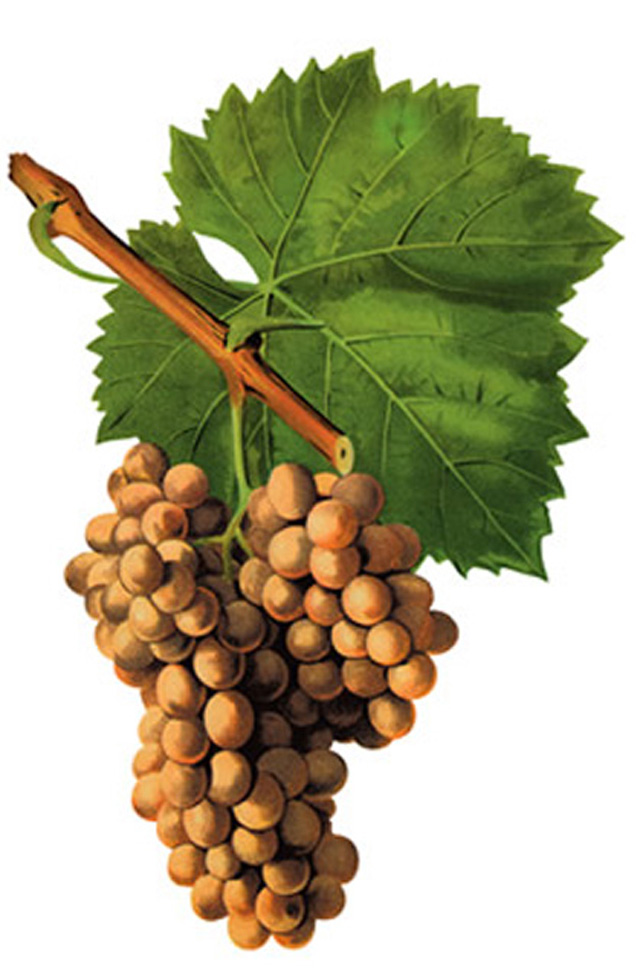 Grenache Blanc (2.47%)
Grenache Blanc (2.47%)It should come as no surprise that Grenache Blanc is the most widely planted white grape in Châteauneuf-du-Pape, given the preponderance of Grenache Noir planted in this appellation. It ripens earlier than the red version of the grape but shares similar other qualities: a rich and creamy texture, lower acidity, and a tendency for higher alcohol. It forms the backbone of Châteauneuf-du-Pape Blanc for many growers, and since it is prone to oxidation, it is frequently fermented and aged either in tank or very large foudres. Generally speaking, Grenache Blanc isn’t as dominant in the final blends as Grenache Noir. However, you will find a few champions for this variety in the appellation – the Châteauneuf-du-Pape Blanc from Domaine de la Janasse is 60% Grenache Blanc for example. It should be noted that Grenache Gris is included in the percentage above because of its scarcity. When present, either as a naturally occurring mutation or planted intentionally, it is ofttimes harvested and fermented along with the Grenache Blanc.
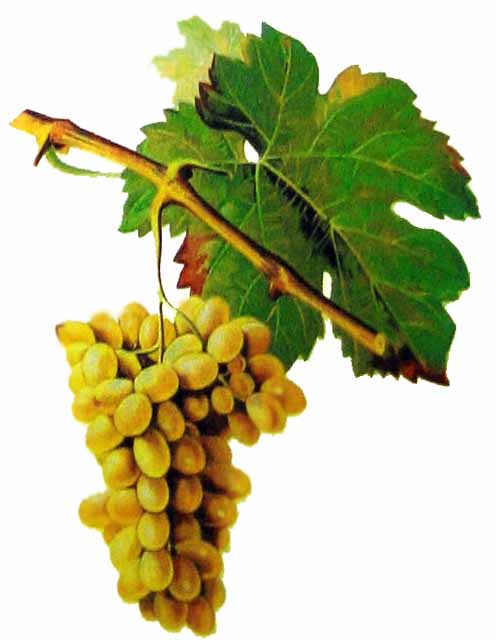 Clairette (2.31%)
Clairette (2.31%)Clairette is an indigenous variety to the south of France capable of producing wines with moderate alcohol and vibrant acidity. It features prominently in Clairette de Die AOP and solely in Coteaux de Die AOP. Unfortunately, it tends to make fairly neutral, green-fruited wines when yields aren’t kept in check or when it is grown in more fertile soils. However, more careful vignerons can coax a beautifully vertical, lifted, and mineral expression from this variety. In Châteauneuf, it provides a much-needed counterweight to the richness present in Grenache Blanc and Roussanne. There is increasing recognition in the Southern Rhône Valley that Clairette, grown under the right conditions, is not only an overlooked variety in terms of quality but one that will become increasingly important as temperatures increase. If you’re interested in an example of this variety’s potential, we would recommend the Cuvée Juliette from Château Pesquié. Clairette Rose, the pink-berried mutation of Clairette, also exists in small quantities in Châteauneuf-du-Pape and is harvested and fermented along with Clairette. Apart from Domaine de Marcoux, all of our Châteauneuf-du-Pape Blancs include 15-33% Clairette in their blends.
 Roussanne (1.11%)
Roussanne (1.11%)Roussanne, like Syrah, is a variety that originated in the Northern Rhône Valley but now finds itself at home in the warmer terroirs of Châteauneuf-du-Pape. This is a fascinating variety and a bit of a chameleon adapting to a wide range of terroirs and climates ranging from the Savoie and the upper Loire to the Roussillon. Roussanne is also the most aromatic of the white varieties in Châteauneuf-du-Pape, capturing all the ephemeral aromas of spring – a bewilderingly complex mixture of new growth and springtime flowers. Richer in texture than any other white variety apart from Grenache Blanc, Roussanne retains a moderately high acidity level, making it a cornerstone in many of the best wines of the appellation. It is the only white variety that shows a natural affinity for barrel fermentation and aging. Blends with a higher percentage of Roussanne generally have a greater capacity to age. However, Roussanne has a few detractors, mainly those who find its ingenue charms a tad tawdry. Both the Prestige Blanc from Domaine de la Janasse and the Macroux Blanc are based on about 70% Roussanne in their respective blends.
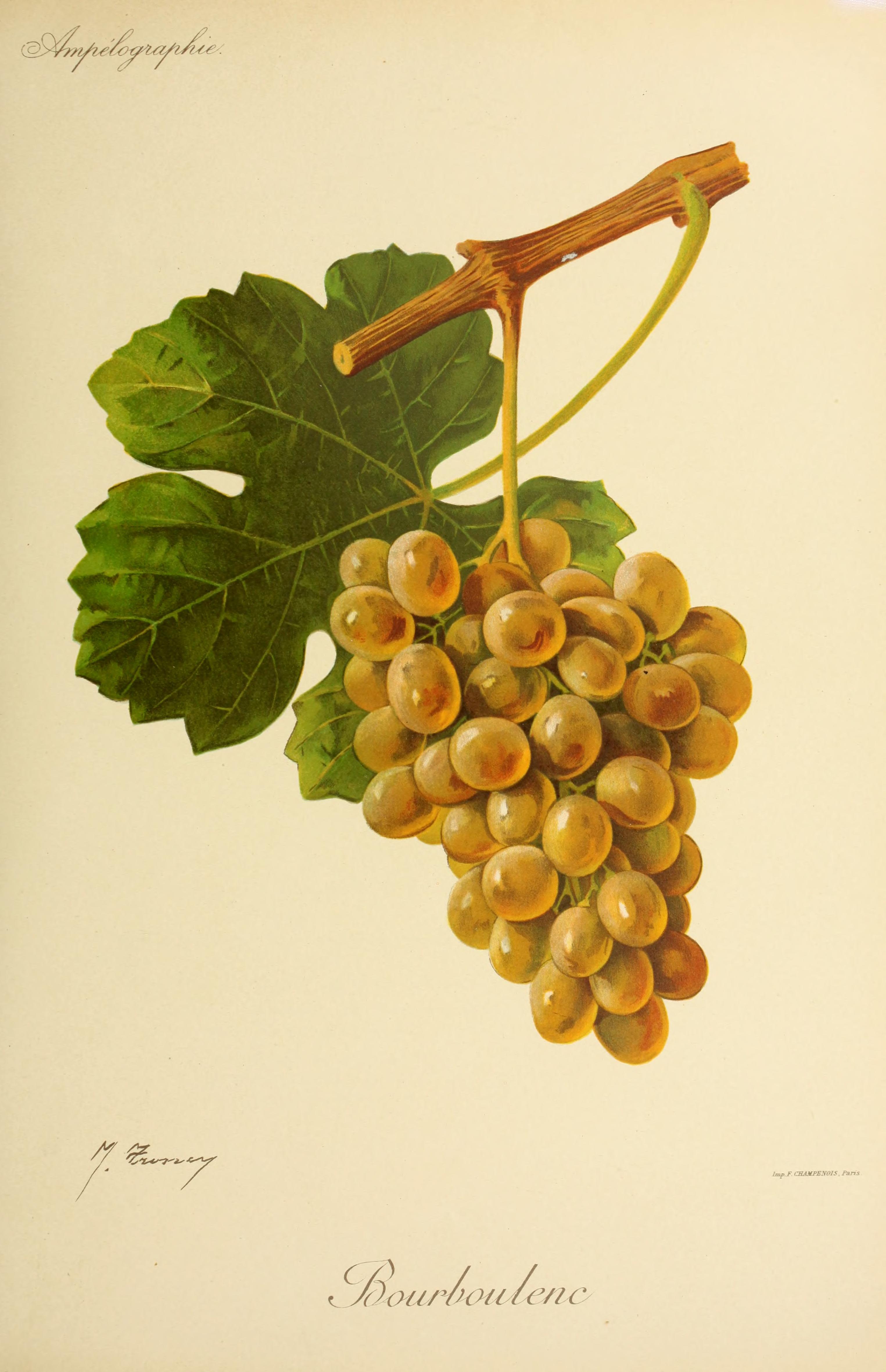 Bourboulenc (1.06%)
Bourboulenc (1.06%)Thought to be somehow related to Clairette and therefore indigenous to the Southern Rhône Valley, Bourboulenc, when picked early, provides acidity, smoky minerality, and citrus flavors to the white wines of Châteauneuf-du-Pape. Picked later, it still retains its acidity, but it is more aromatic, verging on exotic, and it becomes weightier in body with a note of almonds. Though not as refined in its expression as Clairette, which has seen an increase in plantings in the Southern Rhône, plantings of Bourboulenc remain fairly stable. Domaine de Marcoux pairs it with Roussane (and a tiny percentage of Clairette and Grenache Blanc) for their Châteaunuef-du-Pape Blanc and it is included in Domaine Giraud’s Les Galimardes Blanc and Domaine Roger Sabon’s Renaissance.
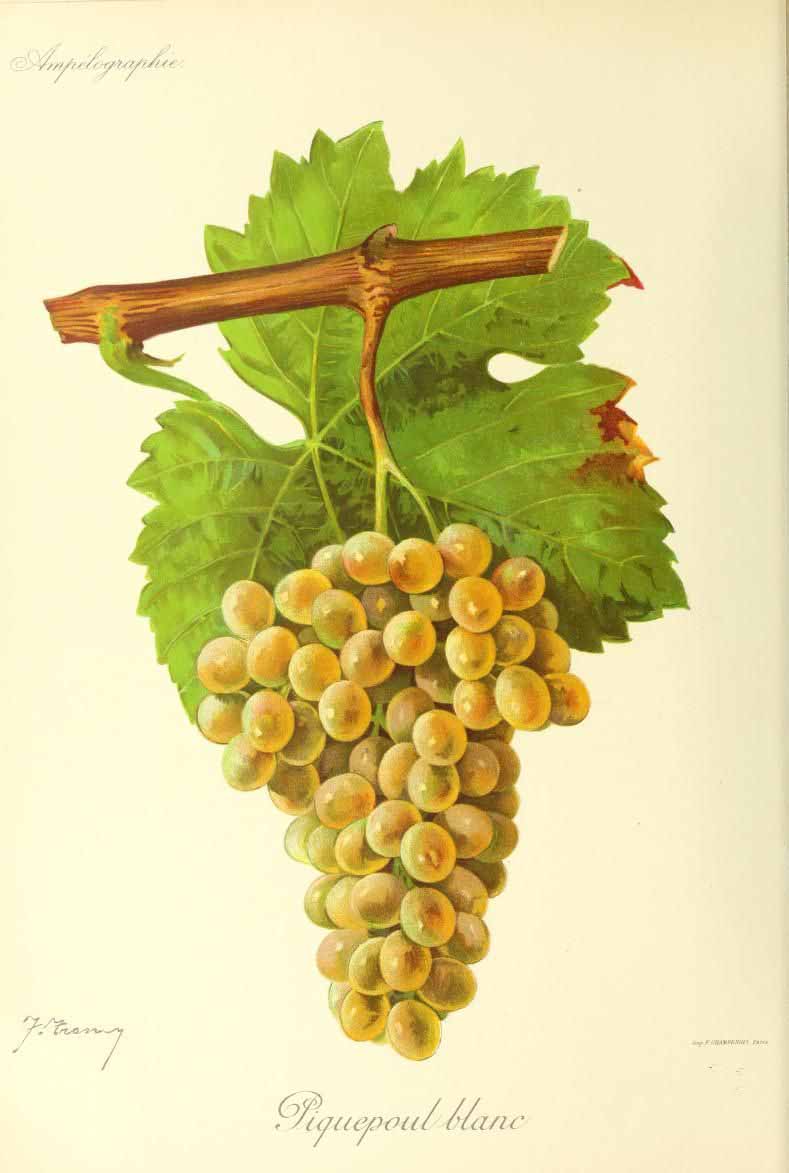 Picpoul (0.06%)
Picpoul (0.06%)A minor player in Châteauneuf-du-Pape Blanc, Picpoul is probably most notable in Picpoul de Pinet, the bracingly tart and low alcohol wine of Languedoc. As charming as Picpoul can be, what it can provide to the white blends of Châteauneuf-du-Pape, namely acidity, is more than amply provided by the more expressive Clairette and Bourboulenc. An ancient grape variety indigenous to the Southern Rhône, Picpoul exists in three color mutations, blanc, noir, and gris. Just because we do not sound enthusiastic about it in Châteauneuf-du-Pape doesn’t mean we don’t appreciate a thirst-quenching Picpoul de Pinet.
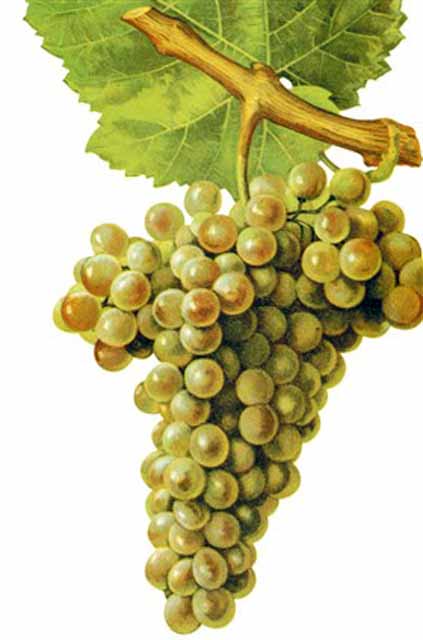 Picardan (0.001%)
Picardan (0.001%)There is only about a hectare of Picardan planted in France and just a few scattered vines planted in Châteauneuf-du-Pape, making its exact contribution negligible. Château de Beaucastel lists it as part of the blend in their red Châteauneuf-du-Pape, and naturally, Tablas Creek makes a small production monovarietal wine for those who are really curious.
Most Chateauneuf du Pape Blanc is released in the late spring or early summer after the harvest, seeing one less year of aging than their red counterparts. A few more structured and age-worthy cuvées such as the Prestige from Domaine de la Janasse will not be bottled until the autumn after the harvest. There is a wide diversity in the fermentation and aging of these wines.
Slightly more important than elevage in understanding our Châteauneuf-du-Papes is examining their blends. The chart below is a rough approximation as vintage conditions can impact the percentages slightly.
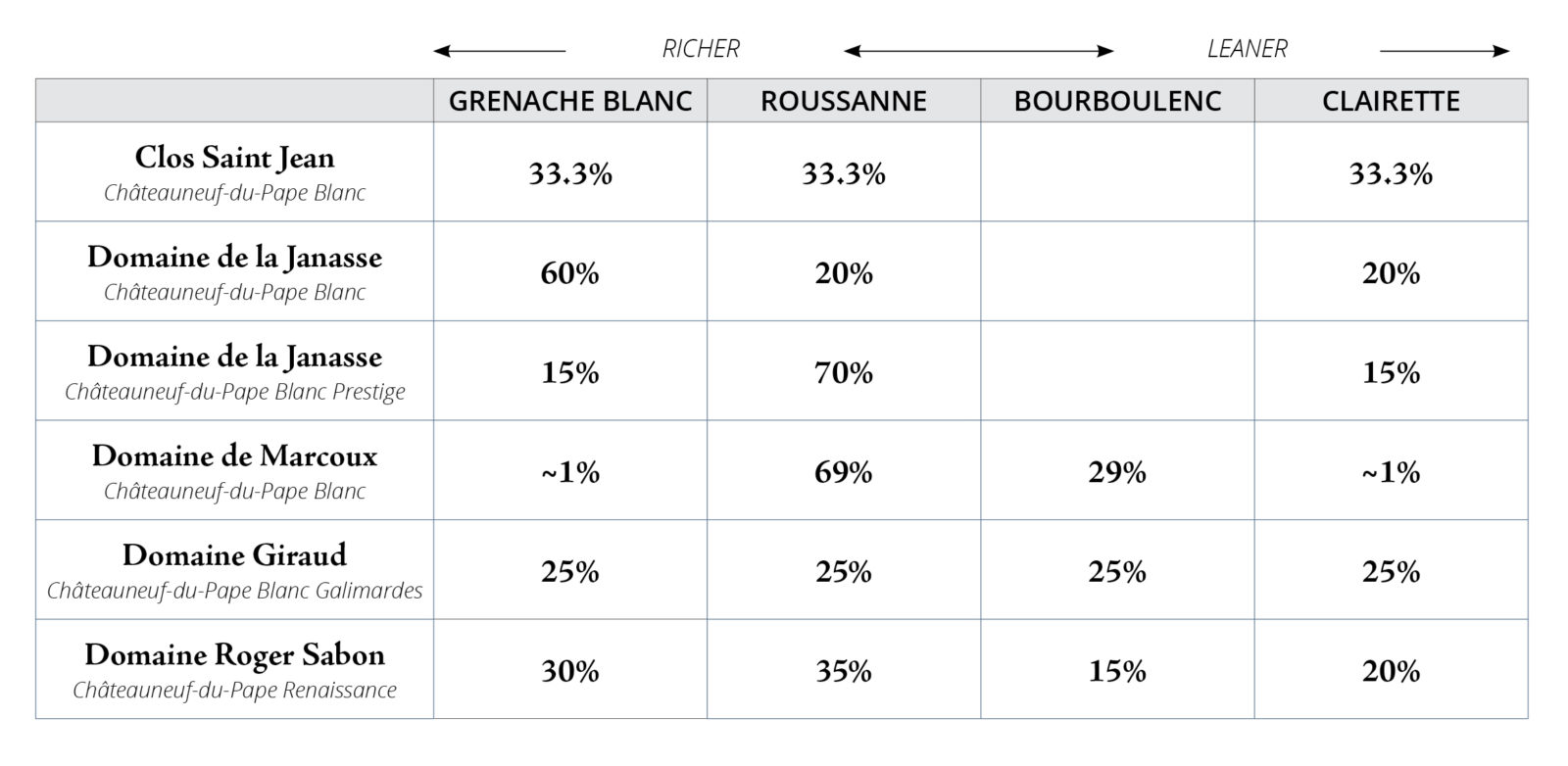
The third confounding element to understanding Châteauneuf-du-Pape Blanc is the role of terroir. Red clay brings added richness and warmth, sandy soils a precise and fruit-forward expression, and limestone promotes slightly punchier acidity. This is made manifest in the preponderance of red clay soils where Clos Saint-Jean farms which adds additional depth and richness to their wine. Conversely, the terroir where Marcoux grows their Roussanne is limestone-rich, resulting in a more high-toned example of this variety. Janasse grows their whites in sandier soils resulting in a pure fruit expression deepened by the age of the vines, and most are well of 50-years-old. Finally, Sabon and Giraud grow their white grapes varieties on the gravelly clays south of the village of Châteauneuf-du-Pape but take a more hands-off approach in the cellar resulting in floral and expressive wines which show their richness more subtly.